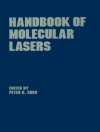Tabla de materias
Preface XXI
List of Contributors XXXI
1 Perspectives in Cytometry 1
Anja Mittag and Attila Tárnok
1.1 Background 1
1.2 Basics of Cytometry 2
1.3 Cytomics 4
1.4 Cytometry – State of the Art 5
1.5 Perspectives 7
1.6 Conclusion 16
References 16
2 Novel Concepts and Requirements in Cytometry 25
Herbert Schneckenburger, Michael Wagner, Petra Weber, and Thomas Bruns
2.1 Introduction 25
2.2 Fluorescence Microscopy 25
2.3 Fluorescence Reader Systems 27
2.4 Microfluidics Based on Optical Tweezers 30
2.5 Conclusion 30
Acknowledgment 31
References 31
3 Optical Imaging of Cells with Gold Nanoparticle Clusters as Light Scattering Contrast Agents: A Finite-Difference Time-Domain Approach to the Modeling of Flow Cytometry Configurations 35
Stoyan Tanev, Wenbo Sun, James Pond, Valery V. Tuchin, and Vladimir P. Zharov
3.1 Introduction 35
3.2 Fundamentals of the FDTD Method 37
3.3 FDTD Simulation Results of Light Scattering Patterns from Single Cells 45
3.4 FDTD OPCM Nanobioimaging Simulation Results 47
3.5 Conclusion 57
Acknowledgment 59
References 59
4 Optics of White Blood Cells: Optical Models, Simulations, and Experiments 63
Valeri P. Maltsev, Alfons G. Hoekstra, and Maxim A. Yurkin
4.1 Introduction 63
4.2 Optical Models of White Blood Cells 65
4.3 Direct and Inverse Light-Scattering Problems for White Blood Cells 69
4.4 Experimental Measurement of Light Scattering by White Blood Cells 78
4.5 Conclusion 89
Acknowledgments 90
References 90
5 Optical Properties of Flowing Blood Cells 95
Martina C. Meinke, Moritz Friebel, and Jürgen Helfmann
5.1 Introduction 95
5.2 Blood Physiology 96
5.3 Complex Refractive Index of Hemoglobin 100
5.4 Light Propagation in Turbid Media 102
5.5 Method for the Determination of Optical Properties of Turbid Media 104
5.6 Optical Properties of Red Blood Cells 109
5.7 Optical Properties of Plasma 122
5.8 Optical Properties of Platelets 126
5.9 Comparison of Optical Influences Induced by Physiological Blood Parameters 127
5.10 Summary 129
Acknowledgments 129
References 129
6 Laser Diffraction by the Erythrocytes and Deformability Measurements 133
Sergei Yu. Nikitin, Alexander V. Priezzhev, and Andrei E. Lugovtsov
6.1 Introduction 133
6.2 Parameters of the Erythrocytes 134
6.3 Parameters of the Ektacytometer 135
6.4 Light Scattering by a Large Optically Soft Particle 136
6.5 Fraunhofer Diffraction 138
6.6 Light Scattering by a Transparent Elliptical Disc 140
6.7 Light Scattering by an Elliptical Disc with Arbitrary Coordinates of the Disc Center 143
6.8 Light Diffraction by an Ensemble of Particles 144
6.9 Light Diffraction by Particles with Random Coordinates 145
6.10 Light Scattering by Particles with Regular Coordinates 146
6.11 Description of the Experimental Setup 147
6.12 Sample Preparation Procedure 149
6.13 Examples of Experimental Assessment of Erythrocyte Deformability in Norm and Pathology 150
6.14 Conclusion 153
References 153
7 Characterization of Red Blood Cells’ Rheological and Physiological State Using Optical Flicker Spectroscopy 155
Vadim L. Kononenko
7.1 Introduction 155
7.2 Cell State-Dependent Mechanical Properties of Red Blood Cells 156
7.3 Flicker in Erythrocytes 158
7.4 Experimental Techniques for Flicker Measurement in Blood Cells 173
7.5 The Measured Quantities in Flicker Spectroscopy and the Cell Parameters Monitored 187
7.6 Flicker Spectrum Influence by Factors of Various Nature 192
7.7 Membrane Flicker and Erythrocyte Functioning 201
7.8 Flicker in Other Cells 203
7.9 Conclusions 204
References 205
8 Digital Holographic Microscopy for Quantitative Live Cell Imaging and Cytometry 211
Björn Kemper and J¨urgen Schnekenburger
8.1 Introduction, Motivation, and Background 211
8.2 Principle of DHM 212
8.3 DHM in Cell Analysis 221
8.4 Conclusion 234
Acknowledgment 234
References 234
9 Comparison of Immunophenotyping and Rare Cell Detection by Slide-Based Imaging Cytometry and Flow Cytometry 239
József Bocsi, Anja Mittag, and Attila Tárnok
9.1 Introduction 239
9.2 Comparison of Four-Color CD4/CD8 Leukocyte Analysis by SFM and FCM Using Qdot Staining 247
9.3 Comparison of Leukocyte Subtyping by Multiparametric Analysis with LSC and FCM 250
9.4 Absolute and Relative Tumor Cell Frequency Determinations 256
9.5 Analysis of Drug-Induced Apoptosis in Leukocytes by Propidium Iodide 262
9.6 Conclusion 266
Acknowledgment 266
References 266
10 Microfluidic Flow Cytometry: Advancements toward Compact, Integrated Systems 273
Shawn O. Meade, Jessica Godin, Chun-Hao Chen, Sung Hwan Cho, Frank S. Tsai, Wen Qiao, and Yu-Hwa Lo
10.1 Introduction 273
10.2 On-Chip Flow Confinement 275
10.3 Optical Detection System 283
10.4 On-Chip Sorting 297
10.5 Conclusion 306
Acknowledgments 306
References 306
11 Label-Free Cell Classification with Diffraction Imaging Flow Cytometer 311
Xin-Hua Hu and Jun Q. Lu
11.1 Introduction 311
11.2 Modeling of Scattered Light 313
11.3 FDTD Simulation with 3D Cellular Structures 318
11.4 Simulation and Measurement of Diffraction Images 322
11.5 Summary 327
Acknowledgments 328
References 328
12 An Integrative Approach for Immune Monitoring of Human Health and Disease by Advanced Flow Cytometry Methods 333
Rabindra Tirouvanziam, Daisy Diaz, Yael Gernez, Julie Laval, Monique Crubezy, and Megha Makam
12.1 Introduction 333
12.2 Optimized Protocols for Advanced Flow Cytometric Analysis of Human Samples 335
12.3 Reagents for Advanced Flow Cytometric Analysis of Human Samples 341
12.4 Conclusion: The Future of Advanced Flow Cytometry in Human Research 355
Acknowledgments 359
Abbreviations 359
References 360
13 Optical Tweezers and Cytometry 363
Raktim Dasgupta and Pradeep Kumar Gupta
13.1 Introduction 363
13.2 Optical Tweezers: Manipulating Cells with Light 364
13.3 Use of Optical Tweezers for the Measurement of Viscoelastic Parameters of Cells 367
13.4 Cytometry with Raman Optical Tweezers 376
13.5 Cell Sorting 381
13.6 Summary 383
References 383
14 In vivo Image Flow Cytometry 387
Valery V. Tuchin, Ekaterina I. Galanzha, and Vladimir P. Zharov
14.1 Introduction 387
14.2 State of the Art of Intravital Microscopy 388
14.3 In vivo Lymph Flow Cytometry 401
14.4 High-Resolution Single-Cell Imaging in Lymphatics 415
14.5 In vivo Blood Flow Cytometry 418
14.6 Conclusion 424
Acknowledgments 424
References 425
15 Instrumentation for In vivo Flow Cytometry – a Sickle Cell Anemia Case Study 433
Stephen P. Morgan and Ian M. Stockford
15.1 Introduction 433
15.2 Clinical Need 434
15.3 Instrumentation 435
15.4 Image Processing 444
15.5 Modeling 447
15.6 Device Design – Sickle Cell Anemia Imaging System 453
15.7 Imaging Results – Sickle Cell Anemia Imaging System 455
15.8 Discussion and Future Directions 458
References 459
16 Advances in Fluorescence-Based In vivo Flow Cytometry for Cancer Applications 463
Cherry Greiner and Irene Georgakoudi
16.1 Introduction 463
16.2 Background: Cancer Metastasis 464
16.3 Clinical Relevance: Role of CTCs in Cancer Development and Response to Treatment 466
16.4 Current Methods 468
16.5 In vivo Flow Cytometry (IVFC) 474
16.6 Single-Photon IVFC (SPIVFC) 477
16.7 Multiphoton IVFC (MPIVFC) 485
16.8 Summary and Future Directions 492
Acknowledgments 495
References 495
17 In vivo Photothermal and Photoacoustic Flow Cytometry 501
Valery V. Tuchin, Ekaterina I. Galanzha, and Vladimir P. Zharov
17.1 Introduction 501
17.2 Photothermal and Photoacoustic Effects at Single-Cell Level 502
17.3 PT Technique 507
17.4 Integrated PTFC for In vivo Studies 518
17.5 Integrated PAFC for In vivo Studies 524
17.6 In vivo Lymph Flow Cytometery 539
17.7 In vivo Mapping of Sentinel Lymph Nodes (SLNs) 547
17.8 Concluding Remarks and Discussion 558
Acknowledgments 563
References 563
18 Optical Instrumentation for the Measurement of Blood Perfusion, Concentration, and Oxygenation in Living Microcirculation 573
Martin J. Leahy and Jim O’Doherty
18.1 Introduction 573
18.2 Xe Clearance 577
18.3 Nailfold Capillaroscopy 577
18.4 LDPM/LDPI 582
18.5 Laser Speckle Perfusion Imaging (LSPI) 583
18.6 Ti Vi 584
18.7 Comparison of Ti Vi, LSPI, and LDPI 586
18.8 Pulse Oximetry 592
18.9 Conclusions 597
Acknowledgments 598
References 599
19 Blood Flow Cytometry and Cell Aggregation Study with Laser Speckle 605
Qingming Luo, Jianjun Qiu, and Pengcheng Li
19.1 Introduction 605
19.2 Laser Speckle Contrast Imaging 605
19.3 Investigation of Optimum Imaging Conditions with Numerical Simulation 608
19.4 Spatio-Temporal Laser Speckle Contrast Analysis 614
19.5 Fast Blood Flow Visualization Using GPU 618
19.6 Detecting Aggregation of Red Blood Cells or Platelets Using Laser Speckle 621
19.7 Conclusion 623
Acknowledgments 624
References 624
20 Modifications of Optical Properties of Blood during Photodynamic Reactions In vitro and In vivo 627
Alexandre Douplik, Alexander Stratonnikov, Olga Zhernovaya, and Viktor Loshchenov
20.1 Introduction 627
20.2 Description and Brief History of PDT 627
20.3 PDT Mechanisms 628
20.4 Blood and PDT 632
20.5 Properties of Blood, Blood Cells, and Photosensitizers: Before Photodynamic Reaction 633
20.6 Photodynamic Reactions in Blood and Blood Cells, Blood Components, and Cells 651
20.7 Types of Photodynamic Reactions in Blood: In vitro versus In vivo 656
20.8 Blood Sample In vitro as a Model Studying Photodynamic Reaction 658
20.9 Monitoring of Oxygen Consumption and Photobleaching in Blood during PDT In vivo 677
20.10 Photodynamic Disinfection of Blood 679
20.11 Photodynamic Therapy of Blood Cell Cancer 682
20.12 Summary 685
Acknowledgments 686
Glossary 686
References 687
Index 699












